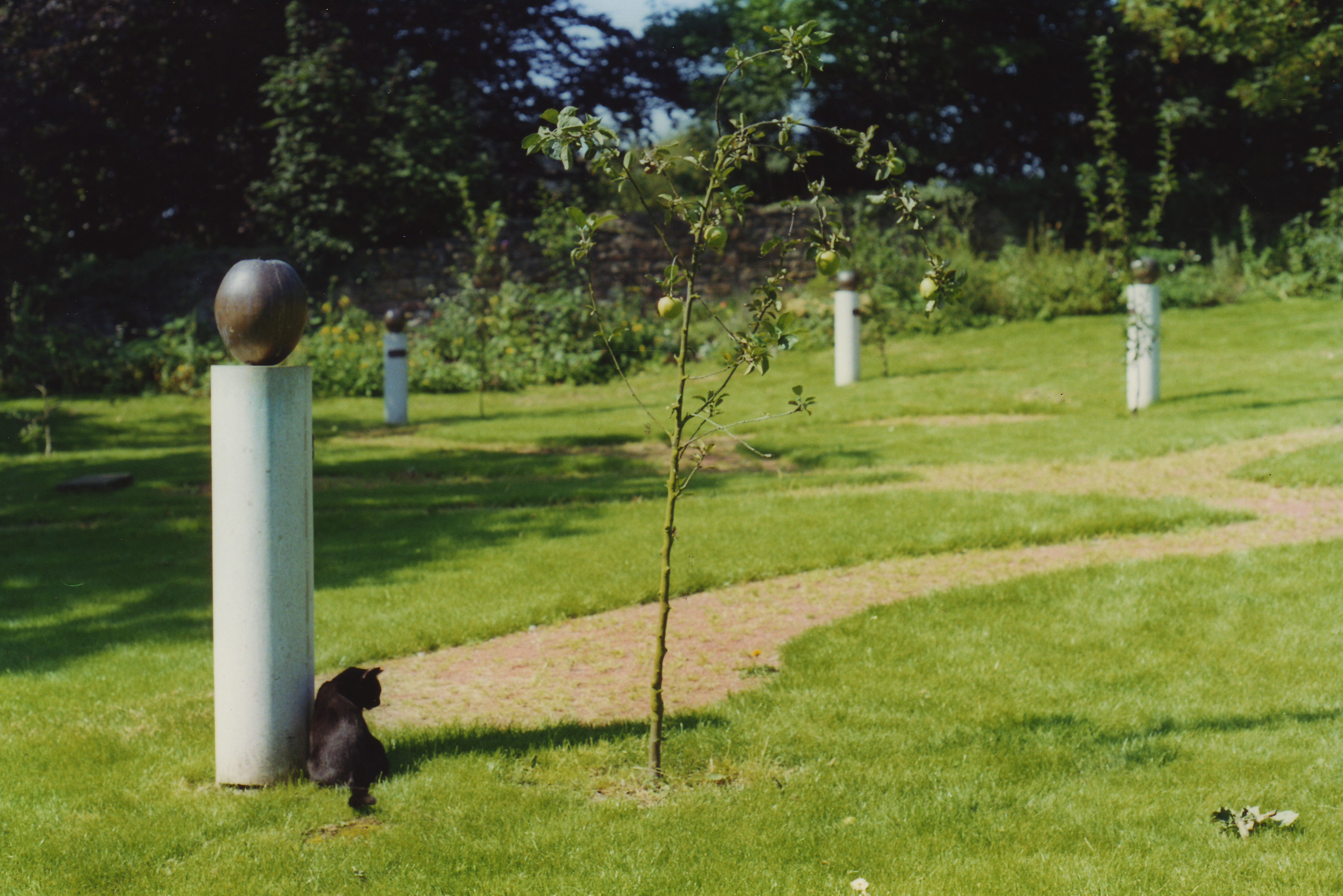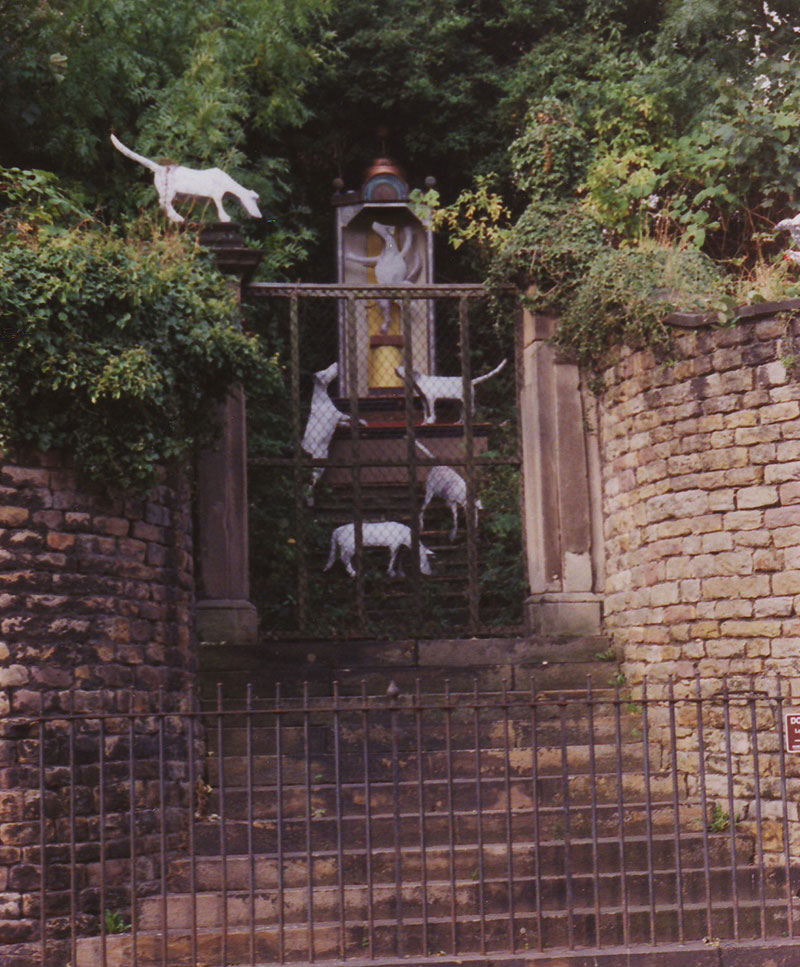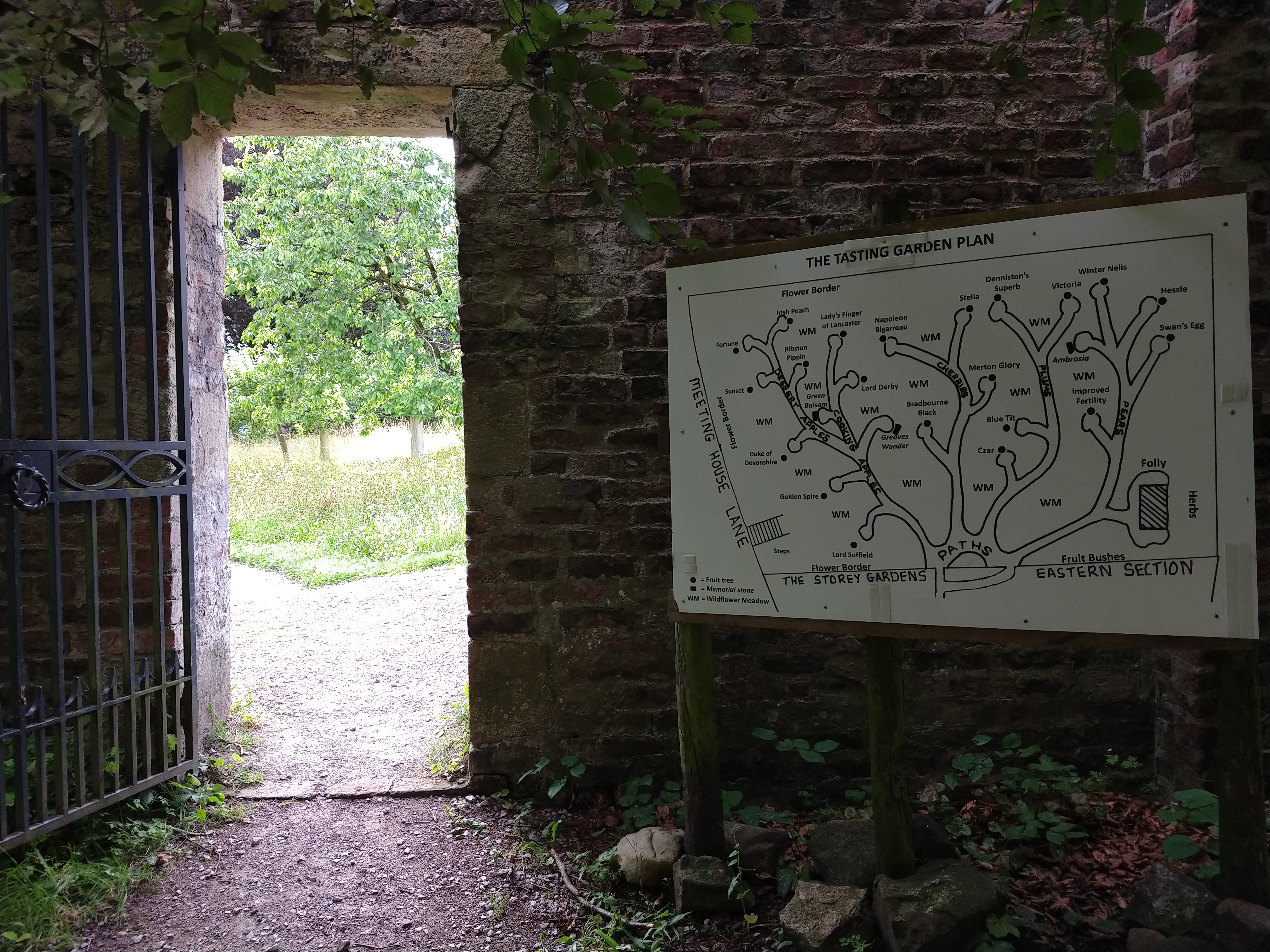The Storey Gardens

Adjoining the Storey Institute is a large walled garden in two sections, which originally belonged to a Georgian house on Castle Park. It is now known as The Storey Gardens.
It is the site of the first recorded works by Andy Goldsworthy made in 1976. This internationally successful environmental artist was a student here when the building housed the art department of Preston Polytechnic, now the University of Central Lancashire.
Ownership of these gardens was transferred to Lancashire County Council in the 1950s, and then to Lancaster City Council in the late 1980s. By the early 1990s the gardens had not been maintained for many years, and so had become completely overgrown and inaccessible.
Having re-established use of the splendid but neglected art gallery in the building, the Storey Gallery organisation was keen also to open up these similarly neglected and unused gardens. At that time, the gardens could not be opened to the public because the only access was via some rather dilapidated and unsafe steps, but the Gallery did take invited and guided visitors into the garden for specific events from 1994 onwards, including workshops with local schools, and display of artworks.
In 1997 Storey Gallery commissioned a temporary sculpture on the blocked-off 18th century steps from Meeting House Lane. Lucy Casson created Dog Days, six life-size dog sculptures and an ornamental folly, all made from scrap materials. Although the garden itself was not open, this artwork was visible to the many thousands of daily passers-by and attracted a lot of attention.

It was followed by a series of temporary artworks by Michael Mayhew, called Breaking Through to the Other Side.
Storey Gallery then succeeded in attracting ArtTranspennine98 (a collaboration between the Henry Moore Foundation and Tate Liverpool) to fund the creation of a permanent artwork in the garden, The Tasting Garden by Mark Dion.
In the spring of 1998 a dedicated team of gardeners, craftspeople, builders, and artists transformed this long-neglected garden into an artwork. The site was covered with Japanese knotweed, so preparation included its removal. To provide public access, new steps were installed and a ramp constructed, so fully opening the gardens to the public for the first time.
ArtTranspennine98 was a huge art project involving commissions by 50 international artists in 35 sites across the region from Liverpool to Hull. It attracted a lot of media attention, and many people visited Lancaster especially to see The Tasting Garden.
A description of this major environmental artwork and its creation is available here.
In 2000-02 Storey Gallery worked with Lancaster City Council and local residents on further improvements, including an upgrade of the entranceway, new signage, seats, a bin store, and wall repairs.
A group of pupils and staff from Lancashire Education Medical Service worked in the gardens, planting the borders and building compost heaps. This group ceased in 2003, but an organisation called Seedsavers undertook maintenance work for several years. One member, Fiona Sturgess, became the regular and long term volunteer gardener, and she still continues.
Storey Gallery occasionally used the section of gardens nearer to the building as an outdoor gallery extension, and displayed various artworks including :
a John Hoskins sculpture; Sue Flowers, Tree Dressing, 2001; Rebecca Chesney, Grazed, 2001; Infrastructures by Geoff Parr and Mike Pearson, 2002. The Gallery also often held its receptions for new exhibitions in the gardens, particularly in summer months. Other arts organisations, including Folly and Litfest, organised events including video projections, music, and story-telling.
The Storey Gardens were successfully open to the public from 1998 until 2006. Although slightly hidden, this tranquil green space in the centre of the city was popular and well used.
However, Lancaster City Council closed the Gardens in 2006, following a drug-use incident. This closure was extended due to the start of refurbishment work on the building when the whole site was closed.
During this closure period the bronze fruits were stolen from The Tasting Garden. Lancaster City Council’s insurance was inappropriate to cover this theft, and the Council did not take any action to restore it. The gardens were not maintained and became overgrown once more.
Storey Gallery obtained agreement from the artist, Mark Dion, that the fruits could be replaced in another material. The Gallery obtained costings for full restoration, and pursued its implementation with officers from both the City and County Council, and, after the building reopened in 2009, with the managers of the Storey Creative Industries Centre. Unfortunately issues of responsibility and governance were not resolved.
In the meantime some volunteer gardeners did a lot of work in the garden, although the gardens were closed. A voluntary group, the Friends of Storey Gardens, was formed in 2013 and began to work towards re-opening the gardens to the public. They have been maintaining the garden ever since, with support from Lancaster City Council, and the gardens are open to the public once more.
The Friends are now pursuing restoration of The Tasting Garden.




